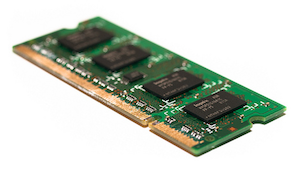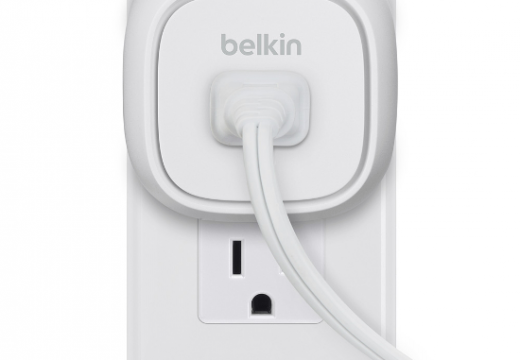 There’s a whole slew of new memory technologies coming up, all of which could be on the market within just three years, and all of which promise tremendous improvements in speed, capacity, and power efficiency.
There’s a whole slew of new memory technologies coming up, all of which could be on the market within just three years, and all of which promise tremendous improvements in speed, capacity, and power efficiency.
Those of us tech savvy enough to at least know we have DDR3 memory in our machines might expect DDR4 to be the next generation of memory, running at even greater speeds, and perhaps supporting even greater capacities. But as it turns out DDR4 is just one of the runner ups for the future of memory. There are at least three other promising contenders which could very well dethrone DDR, perhaps as soon as this decade.
Memristors
Theorized back in 1971 by a professor Leon Chua memristor was supposed to be the fourth basic element of integrated circuits, after resistor, capacitor, and inductor. Memristor stands for memory resistor, and is basically a resistor with memory capacity. It exhibits most of its characteristics at the nanoscale which is why it was only in 2008 that its viability was proven in an HP lab, after many years of advances in nanotechnology.
Memristors have enormous potential, and could prove revolutionary if technology is developed to maturity. One of its first applications is for resistive memory (RRAM) memory chips which would replace currently standard DRAM, and would offer a revolutionary leap in memory capacity, performance, and power efficiency.
Memristors could also be used to develop replacements for Flash storage with similarly revolutionary leaps in capacity and performance, and could also be used in processors. Most intriguing, however, might be the possibility of merging storage and memory into a single device. Instead of having fast memory that reads from relatively slower hard drives (or Flash drives) all of data would reside directly in fast memory where it would be both stored and processed simultaneously.
Applied in this manner memristors could enable computers which can turn off when unused and instantly turn back on when needed. It would virtually eliminate any boot times, and give a whole new meaning to instantaneous computing. In fact, it cannot get any more instantaneous than that.
It is still unclear at which capacities and speeds would memristor based memory chips operate, but it seems safe to say that it will be a huge leap forward. Something like multi-terabyte chips the size of MicroSD cards which can serve as both memory and storage, and operate many times faster than fastest memory we have today, is probably not out of the question.
They also have potential outside of memory, storage and processing. They could be used as super-tiny electronic sensors that can be embedded in mobile devices and sense their surroundings, which could be of great use for scientific research. Finally, they could be used to mimic the way human brain works allowing for computers which can recognize patterns and make decisions in a similar way that humans do. This leads many to believe that memristors could be what leads to the development of first sentient machines (strong artificial intelligence).
First memristor based products should appear on the market in 2013, if we believe HP’s predictions, but given recent turmoil at the company some skepticism about that time frame is probably warranted. In any case, if this technology is viable, it seems likely it will come to fruition within this decade.
Racetrack Memory
IBM has been working on racetrack memory since 2008, and has recently demonstrated a working prototype. Racetrack memory “operates by sending electrical impulses along nanoscale wires to write digital bits”, according to a recent report by The Verge. The goal is to combine the speed of current DRAM memory with the capacity close to current hard drives (up to 1TB) while achieving greater durability than SSDs can provide.
Because of this racetrack memory, just like memristors, has the potential of serving as both storage and RAM simultaneously instead of the two being separate.
The speed difference is dramatic. Whereas hard drives take about 3 million nanoseconds to read or write a bit racetrack memory would take only about 20-32 nanoseconds. That’s about 100 thousandth fold performance increase without much compromise of storage capacity.
It is still not known when racetrack memory might be coming to market though.
Hybrid Memory Cube
HMC or Hybrid Memory Cube is a new architecture for standard DRAM memory which aims to be a better alternative to DDR4. It can offer 15 times better performance than existing DDR3 architecture, uses 70% less power, and takes 90% less space allowing a lot more memory to be put on a single module.
Given these characteristics this could lead to HMC memory modules with capacities of at least 160 GB running at speeds of about 32 Ghz (as opposed to 4266 Mhz that DDR4 can offer.)
The Hybrid Memory Cube consortium, founded to “facilitate HMC Integration into a wide variety of systems, platforms and applications”, considers HMC to be a revolutionary technology compared to DDR4 as an evolutionary standard.
The HMC consortium was founded by Samsung and Micron, and are joined by IBM, OpenSilicon, Altera, and Xilinx. They hope to bring HMC memory to market in 2013.
DDR4
DDR4 seems tame in comparison to the above technology given that it is an evolution of the current standard, but it is the one that seems most likely to be implemented and supported in the short term.
It is still a fairly impressive advancement though. Where current DDR3 goes only up to 2333 Mhz in performance DDR4 can go up to estimated 4266 Mhz, and where DDR3 went only as far as 32GB in capacity on a single module DDR4 could probably go even higher due to support for higher densities. It will also consume about 20-40% less power than DDR3 memory.
Full specification for DDR4 is expected to be published in 2012 with adoption beginning in 2013 and reaching broad market adoption by 2015.
Conclusion
It seems safe to say that the future of memory and digital storage is bright. Multiple technologies are on the table pushing through the existing limitations, and in some cases promising nothing less than a yet another revolution in computing performance.
Most valuable advancements probably won’t be increases in RAM capacity. Anything above 16GB or even 8GB of RAM is probably overkill for most users, and more than they might ever utilize on their devices. Instead what will matter the most are continued increases in memory performance, and power efficiency. This would include getting rid of the performance bottleneck that is the hard drive, the slowest component of a modern computer, and flash drives are already making significant inroads in that area.
The most dramatic and amazing development that seems poised to occur is the merger of a storage medium (a role played by hard drives and flash drives), and random access memory into a single component. When your storage drive is as fast as your memory there is practically no need for the two to be separate. The operating system can use the storage medium for both. A “virtual memory” file for running programs, and the rest of the space for storing data.
Less tech savvy people finally won’t be confused anymore about the difference between storage memory and RAM, and it indeed is more intuitive to think of memory as a single component serving all memory purposes.
Memristors appear to be the closest to making this dream a reality, but racetrack memory has potential as well. HMC and DDR4 are a bit closer to home, simply improving the performance and power efficiency of memory as we know it.
Image by wwarby on Flickr.




Follow Us!